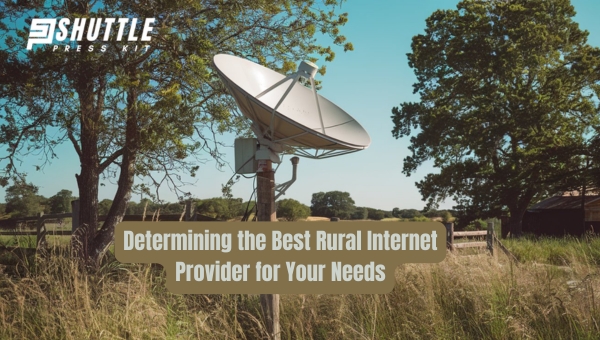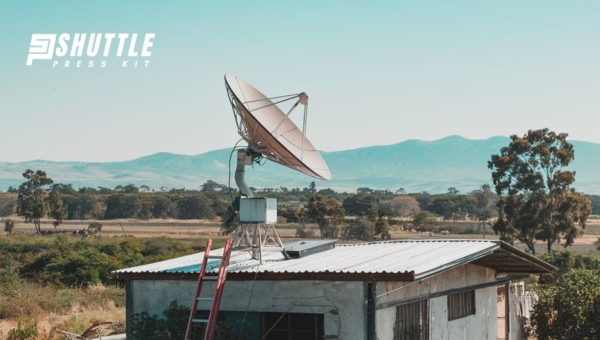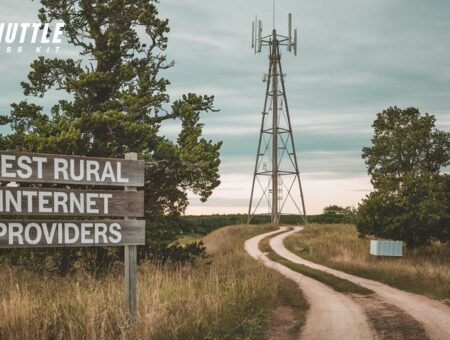Finding the right internet provider is a game changer, especially when you live in rural or remote areas. I know how frustrating it can feel to be left behind in our ever-connected world. That’s why I’m here to talk about the best rural internet providers, ensuring you’re not missing out on high-speed internet because of where you live. Connecting to the world should be easy, no matter your zip code.
The hands-down leaders for rural internet are HughesNet and Viasat, known for their satellite services covering vast areas. For those in less isolated places, DSL options like CenturyLink might also do the trick.
These providers have tailored their services to bridge the digital gap, offering reliable connections even out in the sticks. So, if fast and stable internet is what you’re after in a rural setting, look no further than these trusted names.
Best Rural Internet Providers
For those living in rural areas, finding reliable and fast internet service can be a challenge due to the limited infrastructure.

However, advances in technology have brought forward several providers that specialize in catering to rural communities. Whether through satellite, DSL, or wireless options, here are some of the top choices for ensuring you stay connected.
| Provider | Price | Download Speeds | Data Cap | Availability | Learn More |
|---|---|---|---|---|---|
| Viasat | $99.99–$119.99/mo. | 25–150Mbps | Unlimited | Nationwide | View Plans |
| T-Mobile 5G Home Internet | $40.00/mo.** | 72–245Mbps | Unlimited | 48 states | View Plans |
| Visible (hotspot) | $25.00–$45.00/mo. | Up to 10Mbps on unlimited | Unlimited | 50 states | View Plans |
| CenturyLink | $55.00/mo.* | Up to 100Mbps | Unlimited | 16 states | View Plans |
| Rise Broadband | $35.00–$65.00/mo. | 25–50Mbps | 250GB–Unlimited | 16 states | View Plans |
Also Read: Starlink Volcano Mount Guide: Easy DIY Installation Tips
Determining the Best Rural Internet Provider for Your Needs
When exploring options for rural internet providers, the first step is to assess the types of services available in your area, as this can significantly vary. Satellite, fixed wireless, and DSL are common rural internet options.

Investigate each provider’s coverage, speed offerings, and reliability in rural settings. Additionally, consider any data caps that might limit usage or increase costs. Reading customer reviews and seeking recommendations from local community members can provide insights into which providers deliver consistent service quality.
Next, compare the costs and contracts of the potential providers. Pricing structures can differ widely; some may offer introductory rates that increase after a certain period, while others might require long-term contracts with hefty termination fees.
Look into whether equipment rentals are necessary or if you can use your own devices to save money. Understanding these details will help avoid unexpected expenses and ensure you select a rural internet provider that not only meets your connectivity needs but also aligns with your budget constraints.
Best Rural Internet Providers: Enhancing Internet Connectivity in Rural Locations
Internet connectivity in rural areas can often be frustratingly slow and unreliable due to geographical challenges and limited infrastructure investment. However, residents in these areas can undertake several measures to potentially improve their internet speed and overall quality of service. Here are some practical steps:

- Upgrade Your Plan: Contact your internet service provider (ISP) to see if there are faster plans available. Sometimes, an upgrade to a higher-speed package is all that’s needed to enjoy better internet performance.
- Opt for a Directional Antenna: For satellite or fixed wireless services, using a directional antenna aimed at the nearest tower or satellite can significantly enhance signal strength, thus improving speeds.
- Install a Signal Booster: If you’re using mobile broadband or have weak Wi-Fi signals due to distance from the router, consider installing a signal booster. This device can amplify the signal strength, improving speed and connectivity.
- Use Ethernet Cables: Whenever possible, opt for wired connections over Wi-Fi. Ethernet cables provide a more stable and faster connection for devices that do not require mobility.
- Consider Alternative Providers: Investigate if there are other rural internet options like T-Mobile 5G Home Internet or Verizon 5G Home Internet available in your area which might offer unlimited data with less latency compared to traditional satellite services.
- Keep Devices Updated: Ensure that your modem/router firmware is up-to-date along with any software on devices being used. Outdated software might hinder optimal internet performance.
Implementing these steps may not only bring about improvements in your current service but could also open up new possibilities for accessing high-speed internet in rural locations where options previously seemed limited.
How Much Does a Rural Internet Provider Cost?
When it comes to securing an internet connection in rural areas, customers can expect to find basic plans that cater to everyday casual use.
These are ideal for those who do not demand high speeds or heavy data usage, with prices typically ranging between $25 and $35 per month.
Such plans often offer speeds below 50 Mbps, which can comfortably support activities like browsing and email checking. However, these more affordable options might require the customer to commit to an annual contract to benefit from the lowest possible rates.
For individuals whose internet needs include working from home, participating in online meetings, or engaging in gaming activities, a higher speed connection becomes necessary. Rural users in this category should consider plans offering 100 Mbps or more, with monthly fees starting around $50.
For the pinnacle of connectivity offering speeds up to 3 Gigabits per second – catering well beyond standard requirements – prices can soar up to $300 a month. Clearly, the cost of rural internet connectivity varies widely depending on usage requirements and desired speed tiers.
Also Read: Starlink Offer Phone Service? Discover Now!
What should I look for in a good rural internet provider?
Opt for providers offering reliable service with strong signal strength in rural areas and flexible plans to suit different needs.
Can I get high-speed internet in a rural area?
Yes, many providers now offer high-speed internet options for rural areas, including satellite, DSL, and fixed wireless technologies.
Are there affordable internet options for rural residents?
Certainly, there are affordable plans available, but compare providers since costs can vary based on the technology used and the level of service.
What if I can’t find a good provider in my area?
Consider satellite internet or mobile wireless providers, which have extensive coverage, often reaching areas where traditional broadband does not.
Also Read: Starlink Obstructions: How to Gauge Too Much Interference?
Conclusion
Choosing the best rural internet provider is pivotal for ensuring connectivity in less urbanized areas. The key lies in balancing speed, reliability, affordability, and coverage.
As we’ve explored, satellite and fixed wireless internet options often stand out due to their widespread availability and the capacity to offer reasonable speeds even in remote locations.
Providers like HughesNet, Viasat, and various local fixed wireless companies have made remarkable strides in bridging the digital divide, ensuring that even the most secluded areas are not left behind in today’s digitally driven world.
